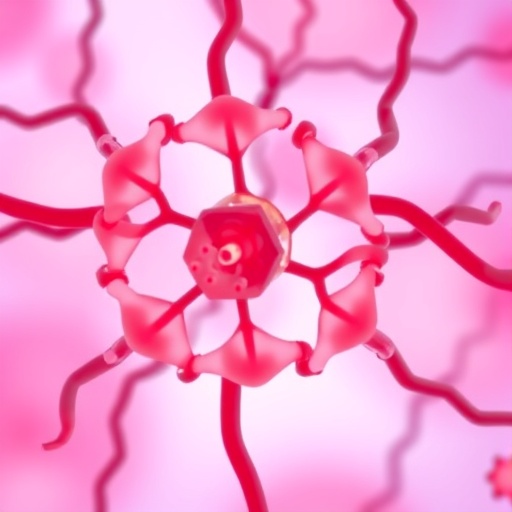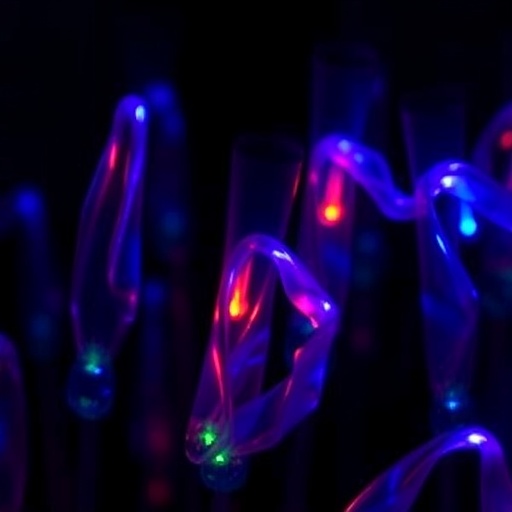In a groundbreaking retrospective review conducted at a leading Irish cancer center, researchers have shed new light on the efficacy and tolerability of neoadjuvant chemoradiation therapy in older adult patients diagnosed with oesophageal cancer. This study addresses a critical gap in oncological treatment research by focusing on a demographic that comprises a significant and growing proportion of oesophageal cancer cases worldwide—the population aged 70 years and older. Despite the increasing incidence of oesophageal cancer within this age group, prior landmark randomized controlled trials such as the CROSS study have largely excluded older adults or involved participants with median ages significantly younger, limiting the applicability of their findings to this vulnerable cohort.
Neoadjuvant chemoradiotherapy, which combines chemotherapy and radiation therapy prior to surgical intervention, has been firmly established as a superior approach to surgery alone for treating locally advanced oesophageal cancer. It has demonstrated improved survival outcomes and disease control, as evidenced in numerous clinical trials predominantly involving middle-aged adults. However, the extrapolation of these results to older populations has remained uncertain, primarily due to concerns regarding increased toxicity, comorbidities, and treatment tolerability. This study is among the first to systematically analyze clinical outcomes, hematological toxicity, and survival metrics specifically in an older Irish cohort undergoing neoadjuvant chemoradiation.
The research team retrospectively examined patient records spanning six years, from January 2015 through January 2021, identifying a total of 105 individuals with clinically staged T1-T4a, node-positive or node-negative, non-metastatic oesophageal cancer who received neoadjuvant chemoradiotherapy. Patients were categorized into two cohorts based on age: an older cohort aged 70 years or more consisting of 35 patients, and a younger cohort under 70 years comprising 70 patients. The older cohort had a median age of 75 years, with an age range extending up to 86, highlighting the study’s inclusion of very elderly patients typically underrepresented in clinical research.
.adsslot_nXSLdyav5E{width:728px !important;height:90px !important;}
@media(max-width:1199px){ .adsslot_nXSLdyav5E{width:468px !important;height:60px !important;}
}
@media(max-width:767px){ .adsslot_nXSLdyav5E{width:320px !important;height:50px !important;}
}
ADVERTISEMENT
One of the study’s pivotal findings was the comparable rates of treatment completion between the older and younger groups. Approximately 80% of older patients proceeded to definitive surgery after completing neoadjuvant therapy, closely matching the 86% rate observed in the younger cohort. This challenges the prevailing assumption that advanced age is a contraindication for aggressive multimodal treatment and supports the notion that chronological age alone should not preclude patients from receiving potentially curative therapies.
Hematological toxicity, a common side effect of chemoradiotherapy manifesting as suppression of bone marrow function and leading to conditions such as neutropenia, was carefully evaluated using the standardized Common Terminology Criteria for Adverse Events (CTCAE) version 5.0. Grade 3 or higher neutropenia, indicating severe depletion of neutrophils and an increased risk of infection, was observed in only a small fraction of patients: 14% in the older cohort and 10% in the younger group. This relatively low incidence, coupled with no significant difference between age groups, demonstrates that older adults can tolerate neoadjuvant chemoradiation with toxicities comparable to their younger counterparts, provided they are carefully selected and monitored.
Survival outcomes, including overall survival (OS) and disease-free survival (DFS), are ultimate measures of treatment efficacy in oncology. In this study, statistical analyses employing Kaplan-Meier survival curves and log-rank testing revealed no significant difference in OS or DFS between the older and younger cohorts. This indicates that older adults derive equivalent therapeutic benefit from neoadjuvant chemoradiation, reinforcing the potential for age-inclusive treatment paradigms in clinical practice.
The use of multivariate Cox proportional hazards modeling further allowed researchers to evaluate factors associated with survival, adjusting for potential confounders. While detailed risk factor data were not elaborated in the publication abstract, the absence of age as a negative predictor underscores the potential for rigorous patient selection criteria over simplistic age cutoffs when designing treatment plans.
Beyond clinical efficacy, this study addresses a critical challenge in geriatric oncology: balancing cancer control with quality of life. Older patients frequently face heightened vulnerability to treatment complications due to comorbid conditions, polypharmacy, and diminished physiological reserve. The study’s evidence suggesting manageable toxicity profiles and high rates of treatment adherence supports the integration of neoadjuvant chemoradiation in older patients following comprehensive pre-treatment assessment.
This research also holds significant implications for healthcare systems confronting the demographic reality of an aging population. As life expectancy increases globally, the incidence of oesophageal cancer amongst older adults is predicted to continue rising. Consequently, evidence-based protocols guiding treatment decisions in this age group will become ever more critical to optimize clinical outcomes and resource utilization.
Moreover, the findings challenge oncologists to reconsider potential biases that may restrict access to aggressive treatments based on age alone. Incorporating geriatric assessment tools and multidisciplinary decision-making can better identify patients likely to benefit from neoadjuvant strategies, ultimately improving survival statistics and patient satisfaction.
The Irish retrospective cohort provides a valuable homogenous patient population, yet the authors acknowledge the limitations inherent to retrospective study designs, such as potential selection bias and the inability to control for unmeasured variables. Prospective trials specifically focused on older adults remain necessary to corroborate these findings and refine treatment algorithms.
Nevertheless, by confirming that neoadjuvant chemoradiation is both tolerable and efficacious for older adults, this study offers a paradigm shift that may influence clinical guidelines and encourage more inclusive trial designs. It bridges a significant knowledge gap and hopefully catalyzes further research into optimizing cancer care across diverse age groups.
As modern oncology strives towards personalized medicine, this study underscores the importance of individualized treatment decisions balancing potential benefits and risks. It simultaneously champions a more equitable framework whereby age ceases to be an automatic barrier to effective cancer therapy.
The evolving landscape of oesophageal cancer treatment now acknowledges the necessity of including older adults in the sphere of standard care. Such inclusive research not only enhances the scientific understanding of disease management but also provides hope and extended longevity to a growing patient population historically underserved by clinical trials.
By integrating the principles of geriatric oncology with advanced therapeutic regimens, clinicians can move towards achieving optimal outcomes that align with patient values and life goals, ultimately redefining standards for care in oesophageal cancer.
Subject of Research: Clinical outcomes and hematological toxicity of neoadjuvant chemoradiation in older adults with oesophageal cancer.
Article Title: Neoadjuvant chemoradiation in older Irish adult patients with oesophageal cancer: a retrospective institutional review of clinical outcomes and hematological toxicity.
Article References:
McLaughlin, R.A., McMahon, D., Cluxton, C. et al. Neoadjuvant chemoradiation in older Irish adult patients with oesophageal cancer: a retrospective institutional review of clinical outcomes and hematological toxicity. BMC Cancer 25, 1280 (2025). https://doi.org/10.1186/s12885-025-14055-6
Image Credits: Scienmag.com
DOI: https://doi.org/10.1186/s12885-025-14055-6
Tags: advancing cancer care for seniorschemotherapy and radiation combined treatmentclinical outcomes in elderly cancer patientsefficacy of cancer treatment in elderlyneoadjuvant chemoradiation therapyoesophageal cancer in older populationsolder adult oesophageal cancer patientsoncological treatment gaps for older adultsresearch on elderly cancer treatmentretrospective review of cancer therapiessurvival outcomes in older cancer patientstoxicity and tolerability of cancer treatment





